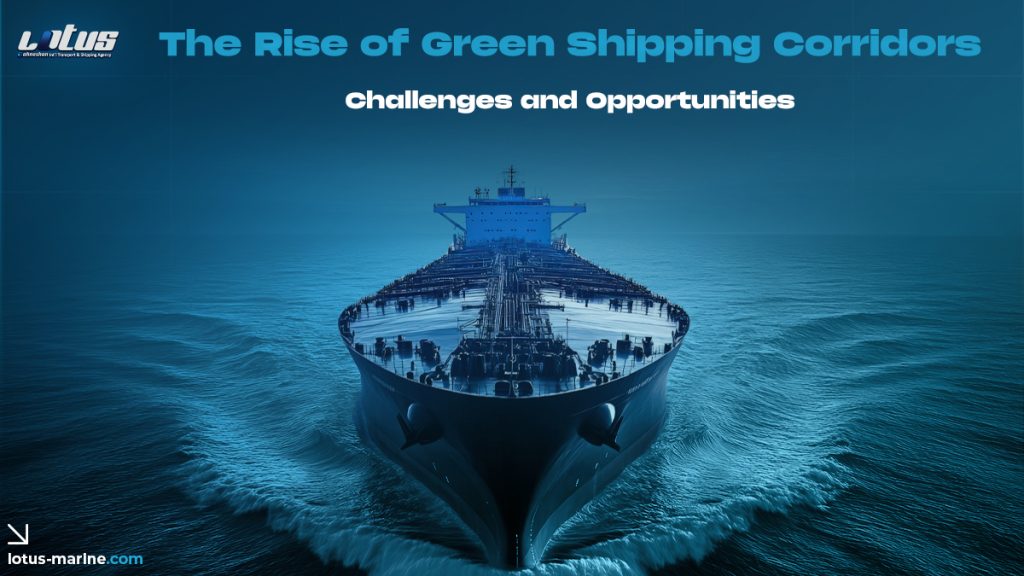Introduction
As the maritime industry accelerates its transition toward decarbonization, green shipping corridors are emerging as a strategic solution to align ports, carriers, fuel suppliers, and regulators around zero-emission trade routes. These corridors—defined routes where vessels, infrastructure, and operations meet ambitious environmental standards—are gaining traction globally. This article explores the drivers behind their rise, the hurdles to implementation, and the transformative potential they hold for the future of sustainable shipping.
What Are Green Shipping Corridors?
Green shipping corridors are specific maritime trade lanes where stakeholders commit to deploying:
- Low- or zero-emission vessels (e.g., fueled by green ammonia, hydrogen, or methanol)
- Clean bunkering infrastructure at origin and destination ports
- Digital solutions for emissions monitoring and optimization
- Regulatory alignment to support environmental targets
These corridors aim to demonstrate feasibility, accelerate technology deployment, and set industry benchmarks.
Global Examples in Development
- Los Angeles–Shanghai Corridor: A flagship transpacific initiative supported by public-private partnerships
- Rotterdam–Singapore Corridor: Focused on scalable green fuel logistics
- Nordic Green Corridor: Supported by Scandinavian governments for short-sea zero-emission shipping
Key Drivers Behind the Shift
- IMO and EU Regulations: Pressure to meet 2030/2050 emissions targets and comply with CII and FuelEU Maritime requirements
- First-Mover Advantage: Ports and carriers involved in early corridors gain reputational and regulatory benefits
- Customer Demand: Cargo owners and retailers are seeking lower-emission transport options to meet ESG goals
- Fuel Ecosystem Development: Corridors help aggregate demand for green fuels, making production and distribution more viable
Challenges to Implementation
1. Fuel Availability and Cost
Green fuels like ammonia and hydrogen are still limited in supply and significantly more expensive than conventional fuels.
2. Infrastructure Readiness
Ports must invest in storage, bunkering, and safety systems tailored to new fuels, which involves high capital expenditure.
3. Technology Maturity
Zero-emission propulsion systems are still in development or early deployment, with reliability and scalability yet to be proven.
4. Regulatory Complexity
Coordinating environmental standards, fuel certifications, and safety protocols across jurisdictions adds legal and administrative complexity.
5. Risk Sharing and Funding
Without shared investment models or public incentives, early-stage green corridors may face financial viability challenges.
Opportunities for Stakeholders
1. Ports
- Positioning as future-ready green logistics hubs
- Access to green infrastructure funding and innovation grants
2. Carriers
- Differentiation through zero-emission fleet segments
- Lower long-term exposure to carbon taxes and regulatory penalties
3. Fuel Suppliers
- Early market development opportunities for green fuels
- Long-term off-take agreements with aligned partners
4. Governments and Institutions
- Achieve national climate goals through public-private collaboration
- Leverage corridors as testbeds for scalable decarbonization policies
The Road Ahead: Scaling the Concept
For green shipping corridors to scale globally, the industry needs:
- Standardized green corridor frameworks (KPIs, emissions metrics, compliance protocols)
- Interoperable digital platforms for real-time emissions tracking and verification
- Joint ventures and coalitions to share cost and risk
- Cross-sector alignment with energy, finance, and tech providers
Conclusion
Green shipping corridors are a powerful catalyst in the maritime decarbonization journey. While implementation poses technical and financial challenges, the strategic benefits of first-mover leadership, emissions reduction, and ecosystem alignment make them a compelling opportunity. As corridor pilots expand and standardization improves, these routes could pave the way for a net-zero maritime future.
Frequently Asked Questions (FAQs)
1. What is a green shipping corridor?
A trade route where ships, ports, and fuel systems are aligned to use low- or zero-emission technologies.
2. Why are green corridors important?
They accelerate the deployment of green fuels and technologies by concentrating demand and investment.
3. What fuels are used in green shipping corridors?
Common fuels include green ammonia, hydrogen, bio-LNG, and methanol.
4. Who funds green corridor development?
Funding comes from a mix of public grants, private investment, and multilateral partnerships.
5. How do green corridors impact the shipping industry?
They reduce emissions, support regulatory compliance, and position participants as leaders in sustainable logistics.







